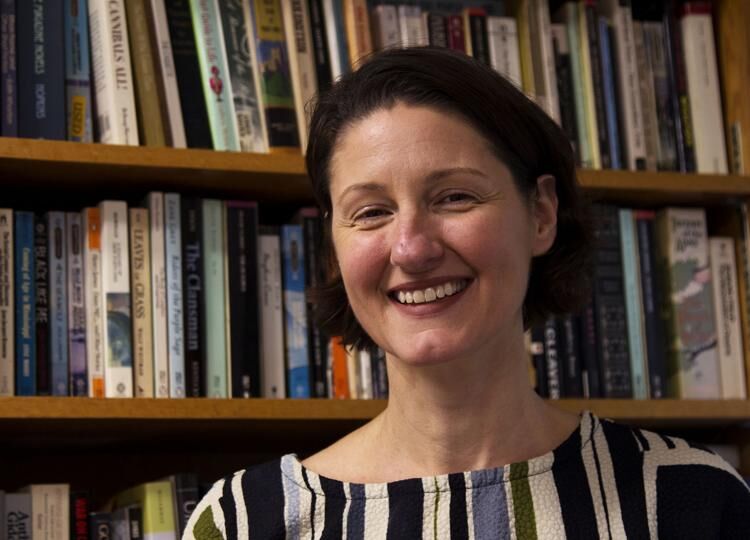Verdict from George Floyd murder trial may reveal historical problems, new solutions
April 22, 2021
After the death of George Floyd last year and protests worldwide in the following months, the verdict of the murder trial and the charges against the man who killed him have been announced.
On Tuesday, jurors ruled Derek Chauvin, a former police officer, is guilty of second-degree murder, third-degree murder and second-degree manslaughter in relation to the death of Floyd.
The jury deliberated for 10 1/2 hours between Monday and Tuesday. Chauvin’s bail was revoked, meaning he will spend the next eight weeks in Oak Park Heights Prison’s segregated housing unit while he awaits sentencing.
Chauvin could face up to 40 years in prison, the maximum sentence for second-degree murder in Minnesota. Since he has no prior criminal record, sentencing for both second-degree and third-degree murder is 12 1/2 years per state guidelines.
Even though he’ll have a maximum of three individual sentences, state guidelines also say that “generally when an offender is convicted of multiple current offenses … concurrent sentencing is presumptive.” This means he would serve all three sentences at once, not consecutively.
Aside from the case itself, there are multiple lenses in which the public can look through to gain a greater understanding of the history of policing and the jury’s decision in this specific case.
Modern policing in the United States, especially its southern states, has its roots in the late 1800s, some historians believe. As a result of freed slaves moving to big cities for work, among other reasons, law enforcement in those areas strengthened, historian and Kent State professor Elaine Frantz said.
At the turn of the century, police started to focus on strike-breaking.
“The police have always been about maintaining the existing power structure,” Frantz said. “The function of the police has been to protect the sort of uneven distribution of wealth, in a way that doesn’t make the people on whose behalf the work is being done see the violence.”
Floyd’s case is one not only of race but of class. It’s also a story about the poor inadvertently using an insignificant amount of counterfeit currency and the police reacting as if it were a major violation of social order, she said.
Since 2005, at least 140 law enforcement officers have been arrested on murder or manslaughter charges in the United States. Around 1/3 have been convicted of these charges, with seven being convicted for murder.
Jurors tend to give police the benefit of the doubt, said Paul Mastriacovo, a senior lecturer in Kent State’s Department of Sociology.
“Think about who typically is on a jury; it is generally not people of color,” Mastriacovo said. “You’re getting people who may come into the jury room with implicit biases. They come in with everything that they’ve learned and socialized.”
Mastriacovo said he was surprised that the jury in the Chauvin trial only took 10 hours to deliberate the three separate homicide charges. He believes the video of the murder changed the outcome of the trial and the time it took to reach it.
“From my understanding, the prosecutor’s theory of the case was ‘watch the video, this is what happened, don’t let anybody else tell you what happened,’” he said. “That video kind of changes things because otherwise, it’s the police officer’s word against the deceased person’s.”
A lot of the public doesn’t trust the police, Franz said. The first step toward a better law enforcement system is transparency.
“Somebody needs to be overseeing what the police are doing. They need to be observing, they need to be keeping records and they need to have access to the information,” Frantz said. “There need to be people outside of police departments; municipal leaders need to have access to records of citizen complaints which often just go directly to the police who often don’t have a responsibility to share them with anyone.”
Similar ideas, such as community policing, have been discussed and even implemented on local scales. The main goal of these programs is to build and implement trustworthy relationships between police and citizens.
Reports of excessive force have even dropped by 95 percent in one New Jersey city after traditional policing strategies were overhauled in 2013.
This case might not set a legal precedent, but in Mastriacovo’s opinion, it’s set a cultural one.
“I think a lot of people are hopeful that this can change the culture and make sure that ‘bad police officers’ learn from this, are fired and are successfully prosecuted,” he said.
Three other former police officers who were at the scene of Floyd’s death will be tried together in August. They are all charged with aiding and abetting second-degree murder and aiding and abetting second-degree manslaughter.
Ian Jameson covers the Statehouse. Contact him at [email protected].

























